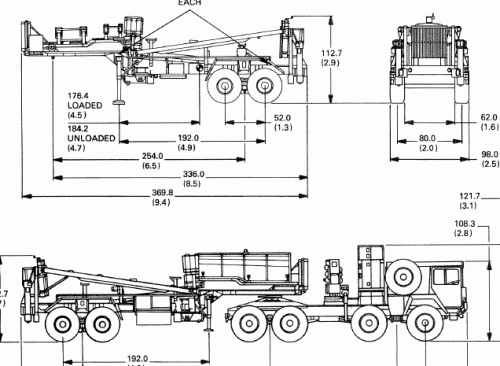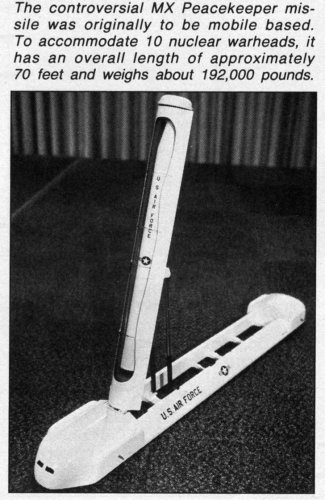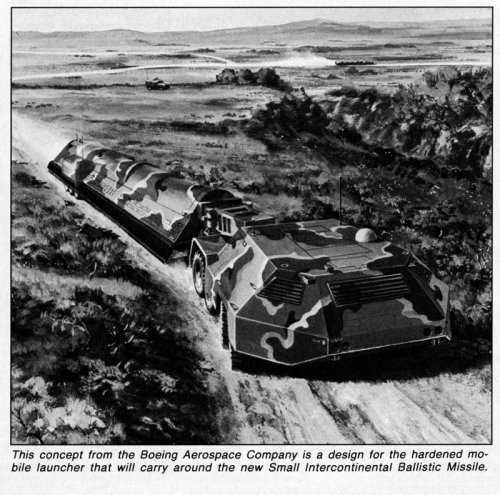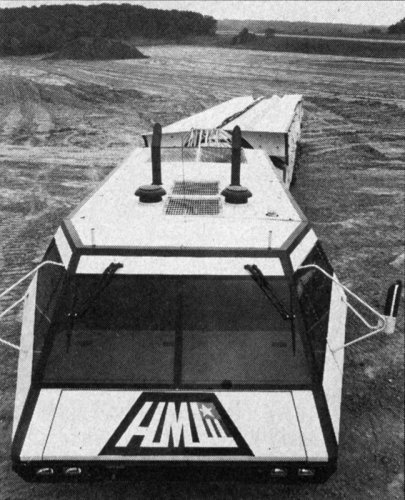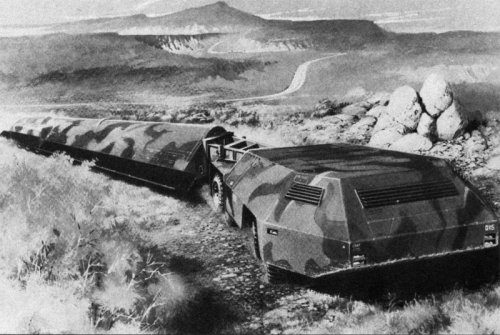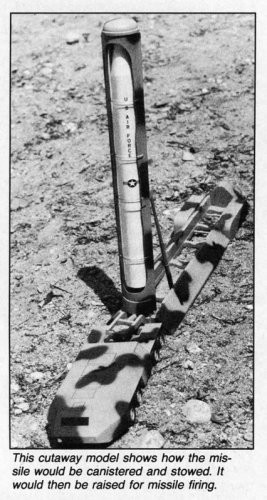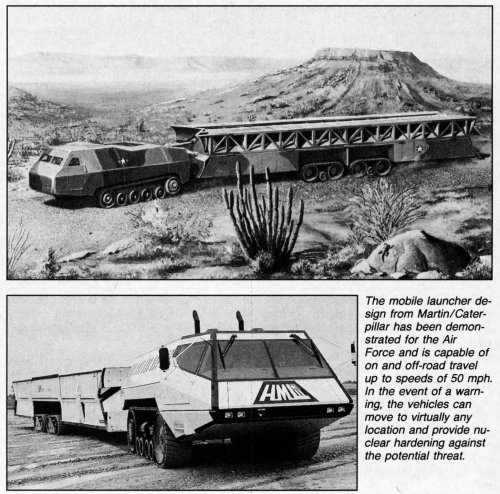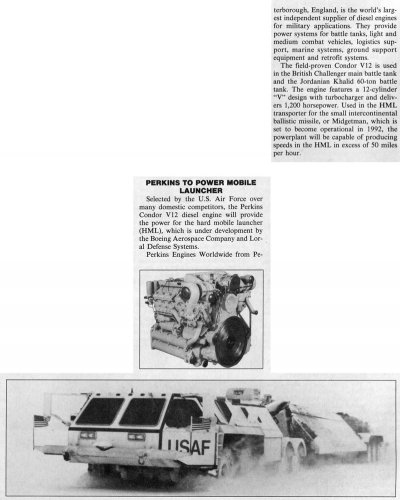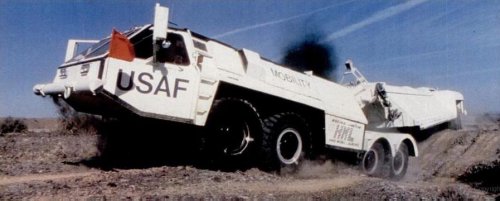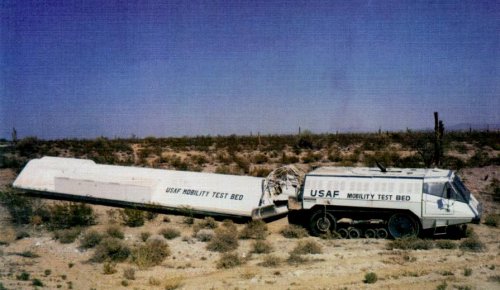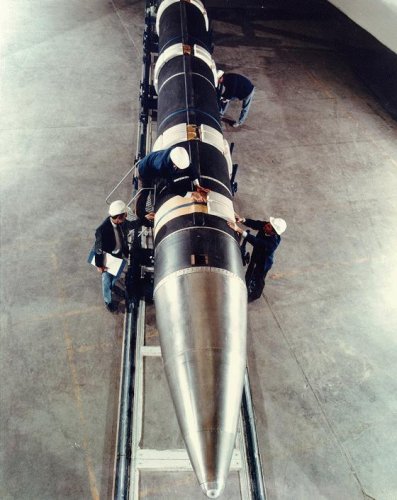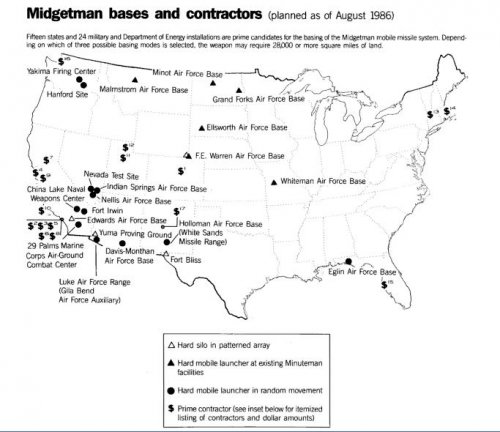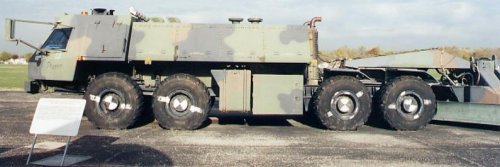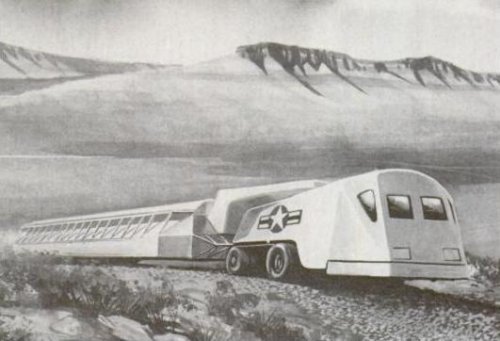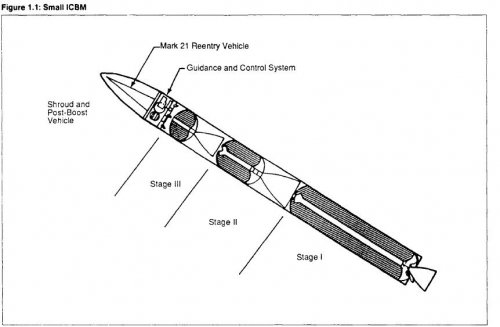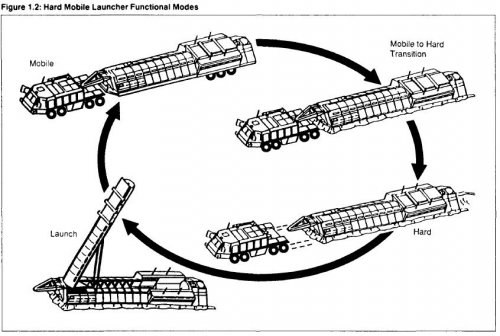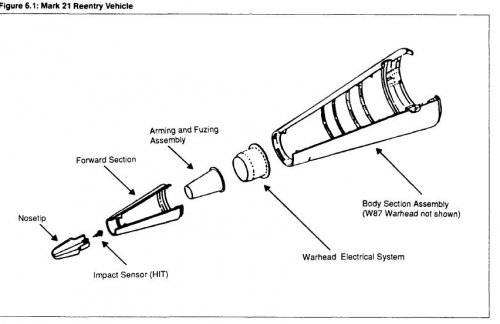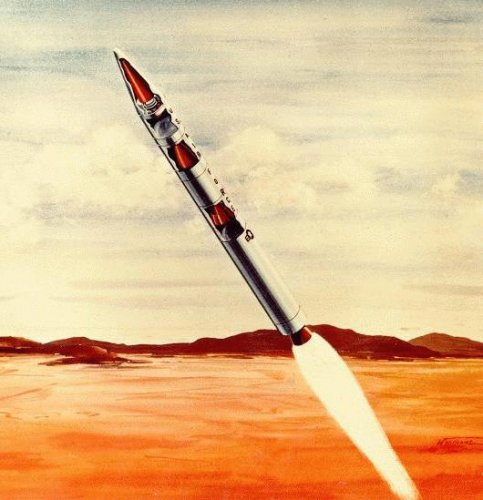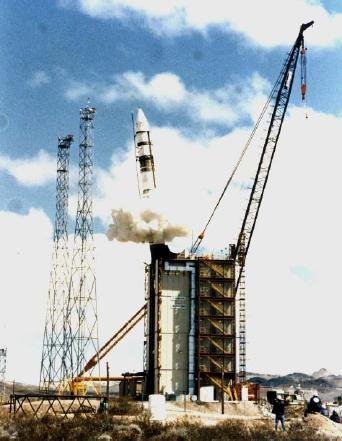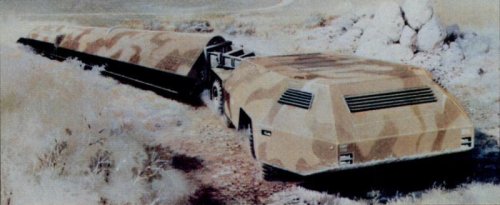Four companies competed for the hard mobile launcher contract: Martin Marietta, Boeing Aerospace, Bell-Aerospace/Textron, and General Dynamics. In January 1985, Boeing and Martin Marietta were awarded parallel 21-month contracts to design, build, and test competing prototypes of the vehicle. Martin Marietta teamed with Caterpillar Tractor Company to design a launcher vehicle, using a single diesel engine and a rubber-belted, tread drive system. Boeing teamed with Goodyear Aerospace and PACCAR Defense Systems to build a similar vehicle, equipped with two diesel engines and an all-wheel drive system, using 14 giant all-terrain tires.
The vehicles, having undergone field tests, are designed to travel at 50 to 60 miles per hour ("dash speed") on good road bed, about half that speed off-road. Resembling high-tech travel-trailers, they are one-third the length of a football field, sit 12 feet high, and weigh 200,000 pounds. Under nuclear attack, the missile-launch sections in the rear are designed to dig themselves slightly into the ground (they have been nicknamed armadillos), deflect nuclear blast, and withstand up to 30 pounds per square inch of overpressure, and then launch their cargo--the Midgetman--in nuclear retaliation.
Source:
"Midgetman: Missile in Search of a Mission" by Paul F Walker and John A Wentworth, Bulletin of Atomic Scientists, November 1986:
http://books.google.com/books?id=xwYAAAAAMBAJ&pg=PA20&dq=Midgetman&lr=&as_brr=3#v=onepage&q=Midgetman&f=false
Map of Midgetman bases and contractors from article.
Photograph of Midgetman prototype.

